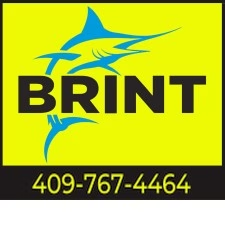
The New Boating Accident Statistics Are In!
Nathan Johnson (The Jerk) was excited about the new phone book being in because his name was in the phone book and that proved that he was somebody. Similarly, the new Coast Guard Boating Accident Statistics are in, and we are excited, too, but not necessarily in a good way. If any of the data in the New Boating Accident Statistics refer to you, then this means that you are dead, severely injured, or had a reportable boating accident, or you killed someone, severely injured someone, or severely damaged their boat. So, in this case, you don’t want to be one of the somebodies referred to in this report.
The Base Galveston Flotilla of the US Coast Guard Auxiliary operates out of the US Coast Guard base on Galveston Island. They aid the Coast Guard by providing maritime observation patrols in Galveston Bay; by providing recreational boating vessel safety checks; and by working alongside Coast Guard members in maritime accident investigation, small boat training, providing a safety zone, Aids to Navigation verification, cooking in base and station galleys and aboard cutters; and on the Coast Guard Drone Team.
RBS-Job One
The primary mission of the Coast Guard Auxiliary is Recreational Boating Safety (RBS). We strive to achieve Recreational Boating Safety through three programs: (1) Vessel Safety Checks and Program Visits to Boating Safety Partners, (2) Public Education, and (3) Recreational Boating Safety Outreach.
Vessel Safety Checks and RBS Partner Visits
Auxiliary Vessel Examiners conduct free Vessel Safety Checks under which recreational vessels are examined for properly installed Federally and State required equipment and systems. RBS Partners are private corporations and organizations such as yacht clubs, marinas, boat dealers, and any business that allows the Auxiliary to place Coast Guard safety pamphlets where members of the public may access them for their personal use.
Public Education
The Auxiliary conducts boating safety education classes which enable members of the boating public to obtain required boating safety certification and learn seamanship, piloting, and the rules of the road. Be prepared: take a boating safety class. Classes may be specialized for content.
Recreational Boating Safety Outreach
The Recreational Boating Safety Outreach is a program aimed at preventing loss of life, personal injury, property damage, and environmental impact associated with recreational boating through outreach to the boating community. Outreach Liaisons coordinate with external boating organizations and partners, maintain relationships with the BoatUS Foundation and others, and communicate with boating publications, retailers, and others. Additionally, Auxiliarists support Public Affairs events such as boat shows, parades, and community activities on behalf of and alongside Coast Guard Public Affairs Specialists.
Coast Guard Mission Support
Specially qualified Auxiliary coxswains and crew members, using their own boats, conduct Marine Safety patrols and Search and Rescue missions at the Coast Guard’s request and under orders, including Perimeter Support for maritime events such as boat parades, regattas, and fireworks events. Auxiliary pilots and air crews, again using their own aircraft, conduct Search and Rescue, observation and support missions under the direction of USCG Air Stations. Communications watchstanders help man Coast Guard radio stations, handling distress calls and supporting Coast Guard Operations.
Coast Guard Auxiliary Specialists
Under legislation passed in 1996, the Auxiliary’s role has been expanded so members can work in any Coast Guard mission authorized by the Commandant except direct law enforcement and military operations. As a result, you will find Auxiliary members examining fishing and small passenger vessels, supporting the Coast Guard with casualty investigations and pollution and natural disaster response, among other things. Recently, Auxiliary members have responded to a shortage of active-duty culinary personnel at both Coast Guard stations and on cutters by becoming qualified culinary specialists and stepping in to support galley operations, sometimes deploying on Coast Guard cutters for weeks at a time. Also, members who are ordained clergy have stepped up as Auxiliarists to augment chaplain and counseling services to the Active Duty.
2024 EXECUTIVE SUMMARY
- In calendar year 2024, the Coast Guard verified 3,887 incidents that involved 556 deaths, 2,170 injuries and approximately $88 million of damage to property as a result of recreational boating incidents.
- The fatality rate was 4.8 deaths per 100,000 registered recreational vessels. This rate represented a 2% decrease from the 2023 fatality rate of 4.9 deaths per 100,000 registered recreational vessels.
- Compared to 2023, the number of incidents increased 1.1%, the number of deaths decreased 1.4%, and the number of injuries increased 2.1%.
- Where cause of death was known, 76% of fatal boating incident victims drowned.
- Where Personal Flotation Device usage was known, 87% were not wearing a Personal Floatation Device.
- Where length was known, 4 of every 5 boaters who drowned were aboard vessels less than 21 feet in length.
- Alcohol use is the leading known contributing factor in fatal boating incidents; where the primary cause was known, it was listed as the leading factor in 20% of deaths.
- Where instruction was known, 69% of deaths occurred on boats where the operator did not receive boating safety instruction. Only 19% of deaths occurred on vessels where the operator had received a nationally approved boating safety education certificate.
- There were 169 incidents in which at least one person was struck by a propeller. Collectively, these incidents resulted in 30 deaths and 158 injuries.
- Operator inattention, improper lookout, operator inexperience, machinery failure, and navigation rules ranked as the top five primary contributing factors in incidents.
- Where data was known, navigation rules violations were a contributing factor in 55% of incidents, 34% of deaths, and 63% of injuries.
- Collisions (with vessels, objects, groundings) were the most frequent first event in incidents, attributing to 56% of incidents, 24% of deaths, and 54% of injuries.
- Where data was known, the most common vessel types involved in incidents were open motorboats (47%), personal watercraft (19%), and cabin motorboats (14%).
- Where data was known, the vessel types with the highest percentage of deaths were open motorboats (46%), paddlecraft (26%) and pontoons (8%).
- Paddlecraft deaths include canoes (4.5%), kayaks (16%) and standup paddleboards (5%) or SUPs. The 11,674,073 recreational vessels registered by the states in 2024 represent a 1.1% increase from last year when 11,546,512 recreational vessels were registered.
Summary
Some of us in the Coast Guard and Coast Guard Auxiliary are excited that the increases in fatalities, serious injuries, and serious damages to property are not as high as we earlier expected. It’s kind of like saying, after a serious accident, “I only lost one leg!” Here are the top five reasons for all of the deaths, injuries, and property damage on the water:
- Failure to wear a life jacket
- Use of alcohol
- Failure to obtain boater safety education (even when required)
- Failure to follow the rules of the road
- Failure to just look where you are going
My favorite movie scene that best demonstrates the reasons for all of this mayhem is the scene in Jaws where all of the boats are headed out to find the shark. As the Richard Dreyfus character said, they’re all gonna die. No, not really. But certainly, a good many will die unless they change their bad habits on the water.




